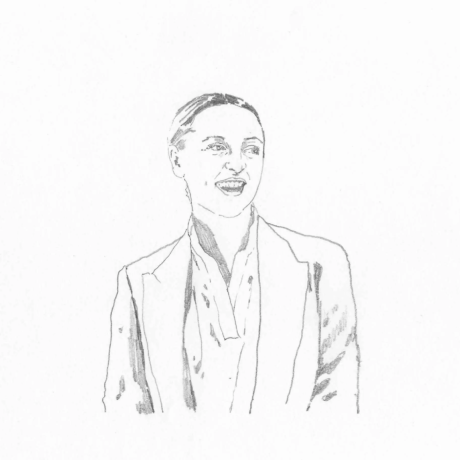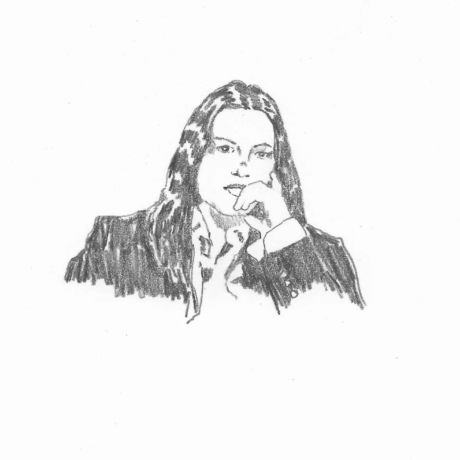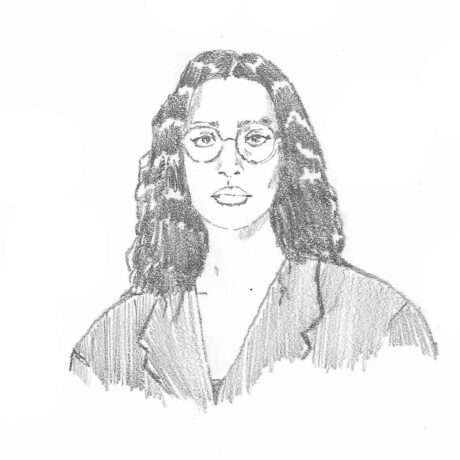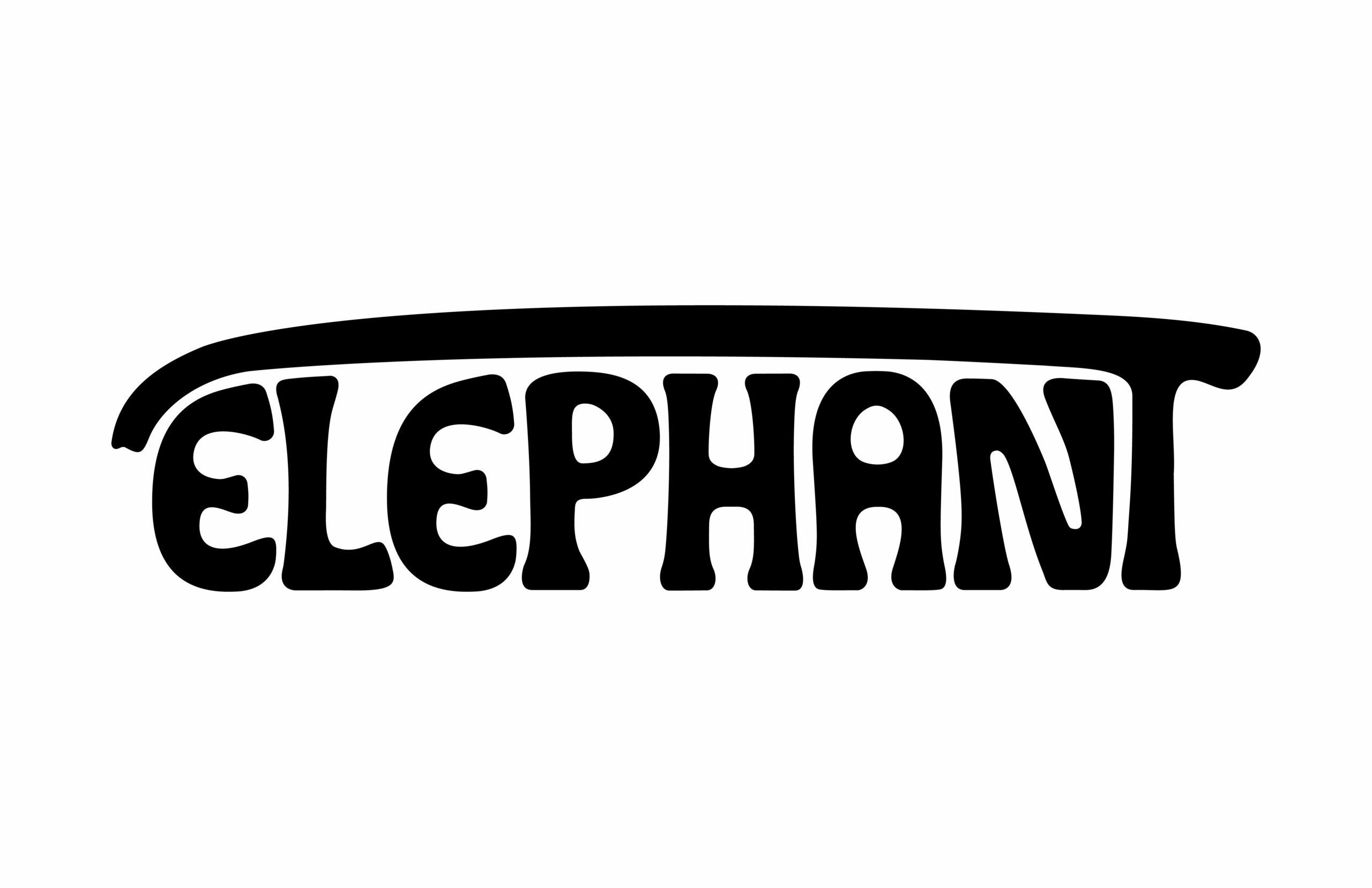AMFM, Chicago
Tune in to our ongoing series featuring some of the most exciting gallerists from across the globe. Here, we sit down to ask them how they run successful galleries so that you can learn how you can too.
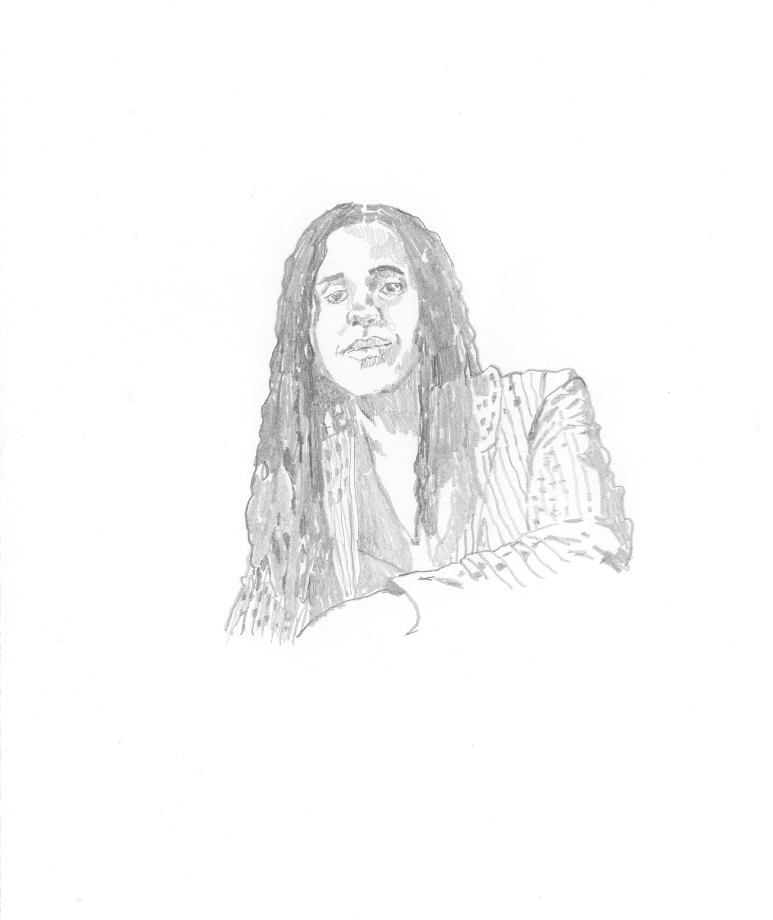
Ciera McKissick is an independent writer, curator, cultural producer, and the founder of AMFM, an organisation whose mission is to promote emerging artists. AMFM, originally a web magazine, has grown into physical space which serves as a cultural hub and heart of Chicago. McKissick’s work is devoted to supporting Black and brown artists and local arts organisations through community engagement that’s driven by inclusivity, accessibility, intention, and care.
Please note that this is an archival interview from 2023.

I remember art being a part of my adolescence. I grew up in Milwaukee Wisconsin and my dad used to take me to monthly Gallery Nights there. All the galleries and creative shops would open up in the evening and we would hop around together. It was our monthly tradition and I always loved it. I used to hang out at this space called UPROC, that was known for street art, skate culture, and Hip-Hop and I remember I always wanted to have a space like that, a community space centred around art and culture. In college, I don’t remember going to many art shows or art spaces. I was more in the music scene, and was studying Journalism and writing about music for the school music magazine, Emmie. I liked art, but I wasn’t ingrained in the arts like I am now. I took one Art History class and it was incredibly boring to me at the time because we were learning about the “classics” through a very Euro-centric lens like most Art History classes centre. I was more interested in the culture of art, music, and creativity as a vessel to bring people together and tell interesting stories. That’s really what birthed AMFM. It was an independent study project my senior year. As a journalist I was interested in asking questions, and doing research, talking to people and learning about process and practice, which in a way is a lot like curation.
I got really into art after college. I was living in Sacramento and my partner at the time’s mom was an artist and we were staying with her family. She was always painting and I was very fascinated living with an artist. I’ve always found myself living with artists, dating artists, and feeling most comfortable in artistic spaces. When I moved back home to Milwaukee, I started putting together shows while I was working at a public health agency by day. I’ve had a lot of different jobs and none of them have been in the arts until now — it’s always been something I’ve done on the side. I moved to Chicago with the intent of saving money and moving to New York or LA to figure out how to do more art things. I was hosting pop ups while I worked at a middle school, and then a Marketing Agency when I opened the gallery here. I fell in love with the artistic community here and how collaborative artists were, and I wanted to support them and be a part of something bigger so I stayed and dove deeper into curation and producing events.
I got a lot more serious about art after the space closed and began working in arts institutions. I was looking at more contemporary art, visiting more spaces, travelling, looking at art through a critical lens, and being exposed to more art history which this time around didn’t bore me. I think ultimately, what inspired me was wanting to create and share space for people with something to show and say in a meaningful way. I was very disinterested in the wine and cheese art worlds. I was into building something else.
We were hosting so many pop ups monthly, and our events and our audience was growing, so it felt like the next stepping stone was to open up a space. At the time, I was very interested in having a space to call our own instead of scrambling for spaces month after month, on top of the overhead and parameters of using spaces that weren’t our own. We opened the AMFM gallery space on January 6, 2016 on the coldest day of the year and were at capacity with a line out the door. It was wild.
Although we no longer have a physical space, AMFM as an entity, was also borne out of that same vision. I was freelance writing about people and artists that in my eyes had already “made it,” and I was more interested in writing articles and reviews about artists that were on the cusp. I also wasn’t seeing a lot of spaces and concepts at the time that were combining different art forms and melding creatives from different backgrounds inside of galleries and spaces, especially in the ‘art world.’ I saw it more in the DIY scene, and AMFM has always straddled the line of DIY/artist-run space and the establishment because of the types of institutional types of collaborations we do, and tiers of our offerings. I also wasn’t seeing a lot of these initiatives being run by women — and a Black queer woman at that.

AMFM as a physical space was such a cultural and creative hub. In those two years when we occupied that space, we hosted over 200 events including exhibitions, music shows, talks and programs, hosted a number of resident artists, a small shop, a music production studio and more. We are incredibly grateful to have been the launching pad for ventures, projects and bodies of work, hosted first time exhibitions or concerts, and were truly able to be a blank canvas to bring ideas to fruition — so many emerging artists need the freedom to do that. The Pilsen neighbourhood thrives off of that energy and mentality as well. It’s a LatinX neighbourhood of working class people who bring the vibrancy of a rich cultural heritage, murals, food, organising and activism, and DIY ethos to the forefront. I think that’s also why it attracts so many creatives. We had been doing a lot of pop ups at spaces in Pilsen and I lived in the neighbourhood for nine years so it was home. Being in Chicago was a deliberate choice. Chicago as a hub is such an incubator and space for artists to experiment and create groundbreaking work.

AMFM has thrived off of pop ups and partnerships with organisations, institutions and spaces across the city. It’s an interesting way of operating and envisioning the whole city as a gallery space. Our tagline used to be “we pop up, you pop out.”
We also really try to centre emerging artists, many of them BIPOC, and find new and fresh voices. I love exposing people to artists they may have never heard of, or thinking about how to expose people to art in untraditional ways and in unconventional spaces, and shake up the traditional white cube.

In the beginning we were much more eclectic. Our first roster of AMFM artists included a mixture of different types of creatives in art, music, fashion and writing. We we’re working with Erin LeAnn Mitchell: Visual Artist, Ashley Tribble: Podcaster, Melissa Castro Almandina: Poet, Michelle Janāyea: Fashion Designer, Sam Kirk: Visual Artist, ZorZorZor: Visual Artist/Muralist, DJ Skoli: Music Producer, Jane Georges: Visual Artist/Fabricator/Installation Artist.
I discover a lot of emerging artists by going to BFA/MFA shows. It’s a great way to see what art students are making, thinking about, and getting a taste of a very fresh and raw talent. I get asked to do a lot of panel and application reviews for juried exhibitions, residencies and artist grants and always save the artists I like. That’s how I came across Lakela Brown’s work very early on! And lastly of course, the internet and social media, and going to lots of art shows.

Most of the artists that I work with are my friends, and if they weren’t my friends first, they become like friendships through relationship building. I feel like that base level of friendship and respect for one another definitely informs the working relationship, which is rooted in trust, and an immense belief in their work and knowledge of their aspirations and goals.
I am very conscious about how people enter and engage with the art world and art spaces, and how that entry point can have a tremendous impact on how they view themselves and their work. Working with emerging artists requires a certain level of mentorship also. Artists are sensitive and passionate individuals, oftentimes sharing the most vulnerable parts of themselves, and you hold a lot of responsibility showcasing people’s stories and work. I always try to put the interest of my artists first, ask questions that lead to other questions and offer insights that can tease out a level of understanding or push the work further.
As well as working with emerging artists, I am also working with emerging art collectors, and people who may be collecting work for the first time. I am very interested in this notion of what a collector looks like and trying to dispel the myth that you have to have a lot of money to collect art. I try to meet people where they’re at and offer a wide variety of types of work, sizes, price points, and make sure they understand the work. I do a great deal of explaining the artist’s intention, the artist’s background to inform their relationship to the work and how it may fit into their life.
I just did an art fair where the collector wanted to buy two works that were on display, but a part of a triptych series and I explained the cultural significance of the context of the work, and he decided that wanted to buy all three because he felt like they should be kept together. The collector asked if they could have a written statement that outlined the meaning behind each work and I worked with the artist to include that information in the sale.
Working with collectors is also about relationship building. I try to stay connected with my collectors and offer them opportunities to engage. I curate some art for a restaurant in Chicago, and have hosted dinners or gatherings with the artists whose work is on display and collectors who have supported us in the past. If I’m doing an art fair or event, I offer free tickets to collectors. We also try to send out quarterly newsletters to our collector base to let them know what new artists we’re working with and what work we have available.

I love the ever-changing worlds and conversations that happen working with artists and sharing their work and visions. It’s incredibly enriching and inspiring to witness people being driven by their passions and being a part of that process.
Being able to open our first gallery was definitely a community feat and a cherished moment in our journey. We learned so much and were a slice in a really pivotal time in Chicago for emerging artists. I truly enjoyed collaborating with the Museum of Contemporary Art Chicago on an activation for their Prime Time: Off Rack event to do an art installation and activate it with DJs and dancers. Becoming a fair partner for Saatchi Art’s The Other Art Fair has felt like a great accomplishment, we’ve now been partners for five fairs. Being a part of Independent Curators International (ICI)’s Inaugural Cohort for their Chicago Seminar and being featured in Artsy’s Black Women Gallerists on Growth and Going Global has felt like a great achievement. But recently, AMFM was accepted to showcase work at EXPO Chicago and this has been a
dream of mine since moving to Chicago. Lastly, I’m participating in my first Curatorial Residency with The Luminary in St. Louis, where I am doing research on artist communities and having conversations with emerging artists, creatives, and arts administrators about the ecosystem of resources, opportunities and support systems in St. Louis and eventually other midwestern cities. I’m excited to say that this will actualize into an exhibition in 2024.
I would love for my legacy to involve running my own larger institution with multiple spaces for exhibitions, performance, and studio practice that continue to centre the work of emerging and mid-career artists. I love being a part of an artist’s journey and a part of cultivating their careers and getting them to the next level. We need more institutional spaces that are not galleries and centred on sales that are willing to take a chance on budding artists and do experimental projects and exhibitions that can be a catalyst for them to cultivate new bodies of work and offer space for growth.

Funding and sustainability has always been a challenge. In the beginning when we had our gallery, our exhibitions and programming were partly curated by us, and also generated by others through rentals. We were hosting lots of different types of things as a model pay rent. While we ultimately had decision power over what was hosted, our voice as a gallery was moulded through that model and our identity wasn’t really as defined.
I have always also had to juggle being a gallerist with a full time job/career and it’s always been hard to oscillate between the two lives. Before it was much more difficult because the jobs that I had at the time were not involved in the arts, whereas now, my work is much more fluid and they inform each other.
I have also always felt insecure about my foray into the art world because it hasn’t been traditional. I come from a different background, see things through a different lens, and don’t have a degree in Art or Art History, so oftentimes I feel like I get a bit of imposter syndrome when I am in certain spaces or places.

One of my early mentors was Janice Bond, who describes herself as a “cultural architect,” and I really like that. She’s worked with all kinds of spaces and artistic places across the nation and globe in varying roles and sectors. She was doing amazing work in Chicago, and then at CAM Houston, and now her own gallery space. When she was in Chicago, she was really great at bringing people under her wing and making sure to connect people to each other and opportunities. She really wanted specifically to bring Black women in the arts together and create spaces outside of traditional galleries and institutional spaces for us to convene and be in conversation about our work. I met a lot of the people I know in Chicago today through those gatherings.
Peripherally I have always been very inspired by the Black women I see in these high profile art roles and look up to them because representation does matter at the end of the day. Early on I never saw people who looked like me doing this work in the art world, or even showcasing or showing work by Black artists and artists of colour. I am very inspired by people like Naomi Beckwith, Mariane Ibrahim, and Allison Glenn for their contributions to the greater conversations around art and shining a spotlight on what it means to be a Black woman doing this work.

I never got any formal training to become a gallerist. I feel like I’ve been just doing the work. I try to stay in tune with what’s happening in the larger contemporary art world, and read about artists, other curators and gallerists, and what they are doing to inform my practice. I have a very entrepreneurial spirit and am always down to try something and learn from it, or speak with others who are doing similar work to gain insight or knowledge on the things I don’t know.
A lot of my past jobs, whether they have had to do with art or not, have informed my work as a dealer/gallerist. I used to work in marketing also and the root of marketing is that you’re trying to sell a product or persuade people that they need something. How you tell the story or connect with people is how you sell that product, and in this case, art just happens to be the product at hand. I like to think that life training like relationship building and communication is just as important as training too.

Don’t be afraid to create your own lane. Your journey may not look like others, and don’t be in a rush or tied to time and accolades. Things take time to build, and you have to be in it for the long game, not the short winnings. Working with artists is a collaboration and a relationship to nurture, as is your relationship to collectors.

Hustle, Learn, Collaborate
Typeface developed by Furqan Jawed

